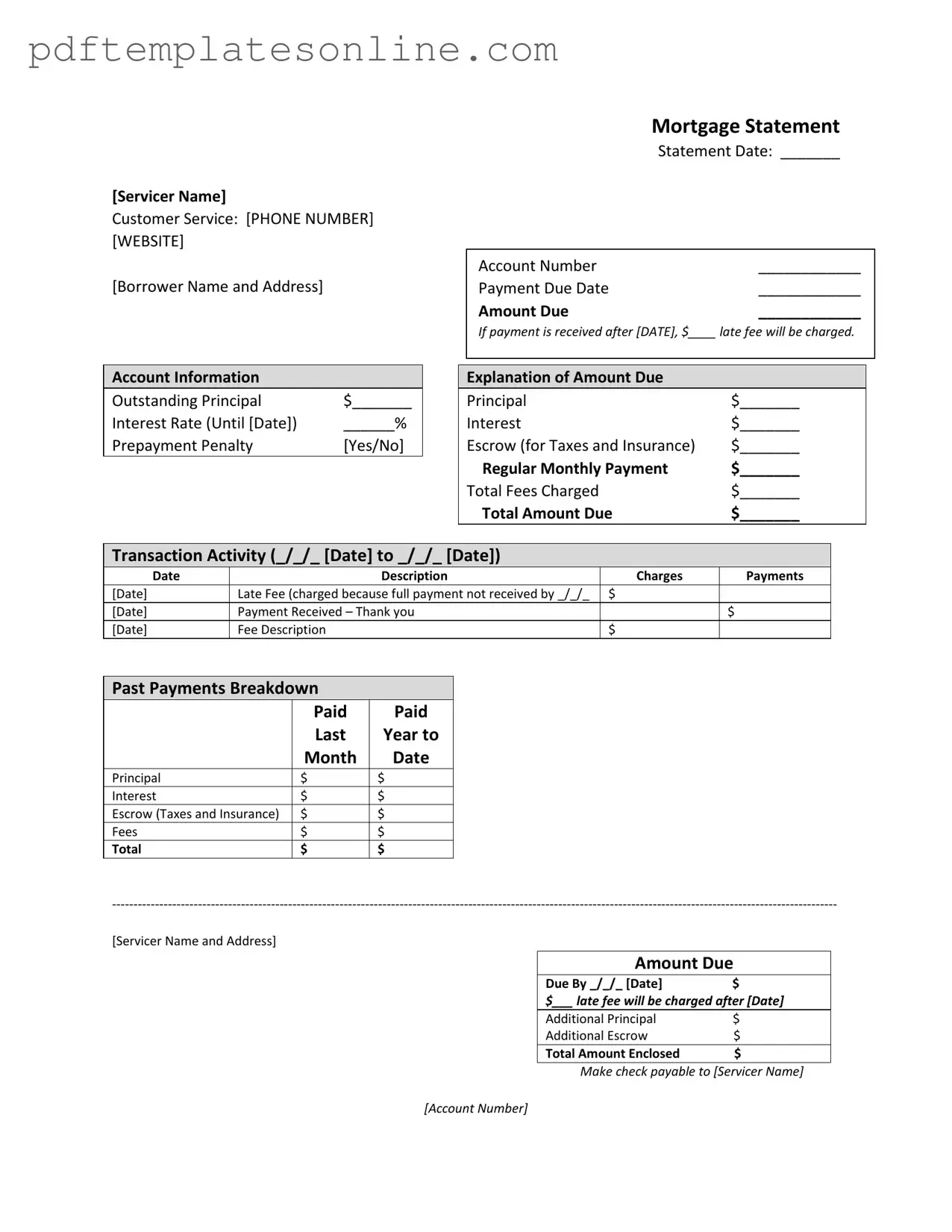Blank Mortgage Statement Form
A Mortgage Statement is a document provided by a mortgage servicer that details the current status of a borrower's mortgage account. This form includes essential information such as the amount due, payment history, and any applicable fees. Understanding the Mortgage Statement is crucial for borrowers to stay informed about their mortgage obligations and avoid potential penalties.
Access Mortgage Statement Editor Now
